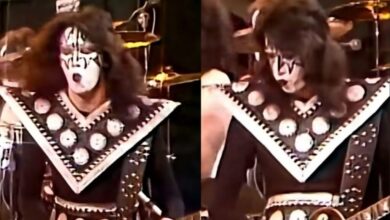The Accidental Song That Became Conway Twitty’s Most Haunting Goodbye
In the summer of 1958, a young and relatively unknown Conway Twitty walked into a studio to record a track that wasn’t meant to change his life. It was late at night, the kind of hour when most sessions were wrapped and the room felt more like an afterthought than a stage for greatness. The song in question, “It’s Only Make Believe,” was simple in structure and modest in ambition. Nobody expected it to become the hit that would define him for decades.
The recording wasn’t part of some grand marketing plan. It wasn’t polished for radio or crafted to meet a label’s demands. In fact, it happened almost by accident. Conway and his band were experimenting, chasing a mood more than a market. At that point, his career had yet to take flight, and there was no guarantee this recording would even see the light of day.
When “It’s Only Make Believe” finally played through the speakers, there was something about it that caught the ear — a tension between vulnerability and control. Conway’s voice carried a trembling rawness, like someone holding back a flood of emotion. It wasn’t just a song; it felt like a confession. Listeners weren’t merely hearing heartbreak; they were being pulled into the very heart of it.
The story behind the song has always been cloaked in mystery. What fans didn’t know at the time was that it came from a deeply personal place. Those close to Conway whispered about an unspoken love — someone he could never be with — and the quiet pain that followed him. He never confirmed or denied these rumors, preferring to let the music speak.
Some say he sang “It’s Only Make Believe” as though speaking to a ghost. Others believe it was the only time he truly let the outside world see past his confident exterior. Either way, the sincerity in his delivery was undeniable. Every note seemed to carry a piece of something unfinished, something unresolved.
When the single was finally released, its success blindsided everyone, including Conway himself. It shot to the top of the charts, resonating not just in the United States but internationally. People connected with the aching honesty in his voice, even if they didn’t know the story behind it. For many, it became the soundtrack to their own heartbreaks.
The rise of the song transformed Conway from a struggling artist into a rising star almost overnight. Suddenly, his name was in newspapers, his voice was on every jukebox, and his schedule was packed with performances. Yet, behind the newfound fame, the quiet truth of what inspired the song remained untouched.
Some journalists tried to press him for details, curious about the source of such emotional depth. Conway would smile, deflect, and steer the conversation back to the music itself. He wasn’t evasive in a defensive way — more in the manner of someone protecting something too personal to put on display.
As the years passed, “It’s Only Make Believe” became more than a hit; it became a signature. No matter how many songs he released afterward, fans would always ask for it. And every time he performed it live, there was still that flicker of emotion in his voice, as if the original wound had never completely healed.
Decades later, music historians still point to the song as one of the most haunting debuts in the history of popular music. It was a reminder that sometimes the most enduring works are born not from grand design, but from moments of pure, unfiltered honesty. The recording didn’t just mark the start of Conway’s career; it captured a moment in time that could never be recreated.
In interviews much later in life, Conway hinted that the song’s meaning had shifted for him over the years. What began as something rooted in personal loss had evolved into a shared experience with his fans. He understood that they had their own stories, and in a way, his song had become theirs.
Still, speculation about the true inspiration never fully went away. The identity of the person — if there even was one — remained a mystery. Some believe this ambiguity added to the song’s power. Without a clear answer, listeners were free to project their own feelings and memories onto the lyrics.
The haunting quality of “It’s Only Make Believe” lies in its timelessness. Its emotions are not tied to a specific era or style; they are universal. Love, longing, and the quiet ache of what can’t be — these themes never fade, and Conway’s delivery ensures they hit as hard now as they did in 1958.
For Conway Twitty, the song was both a blessing and a burden. It opened doors, built his career, and ensured his place in music history. But it also tethered him to a chapter of his life that may have been painful to revisit. Still, he carried it with grace, knowing that it had given him something few artists ever achieve — a piece of music that truly connected with the world.
Today, long after its release, “It’s Only Make Believe” still echoes with the same force. Whether it was a heartfelt performance or a final goodbye to someone unknown, the truth is perhaps less important than the feeling it leaves behind. And that feeling — tender, aching, and unforgettable — is why the song continues to live on.





